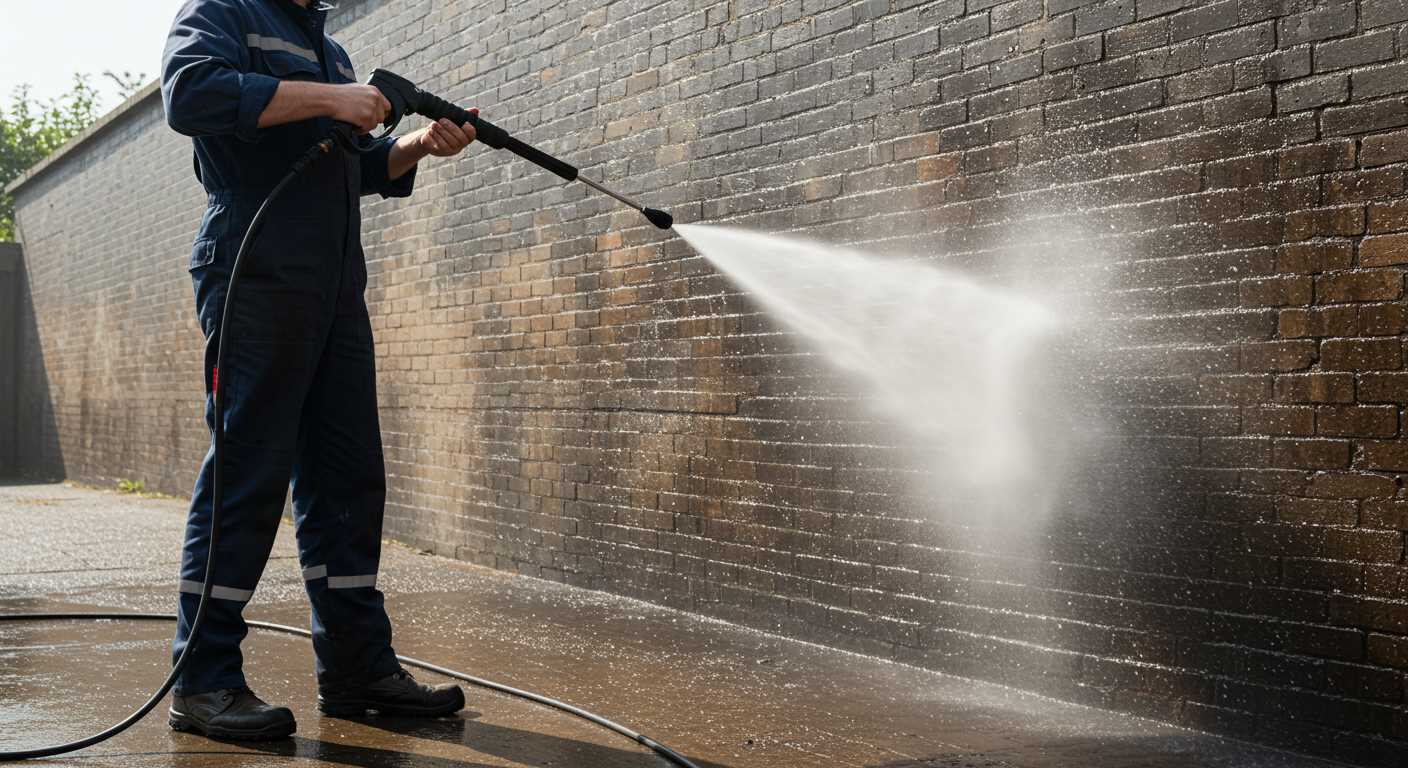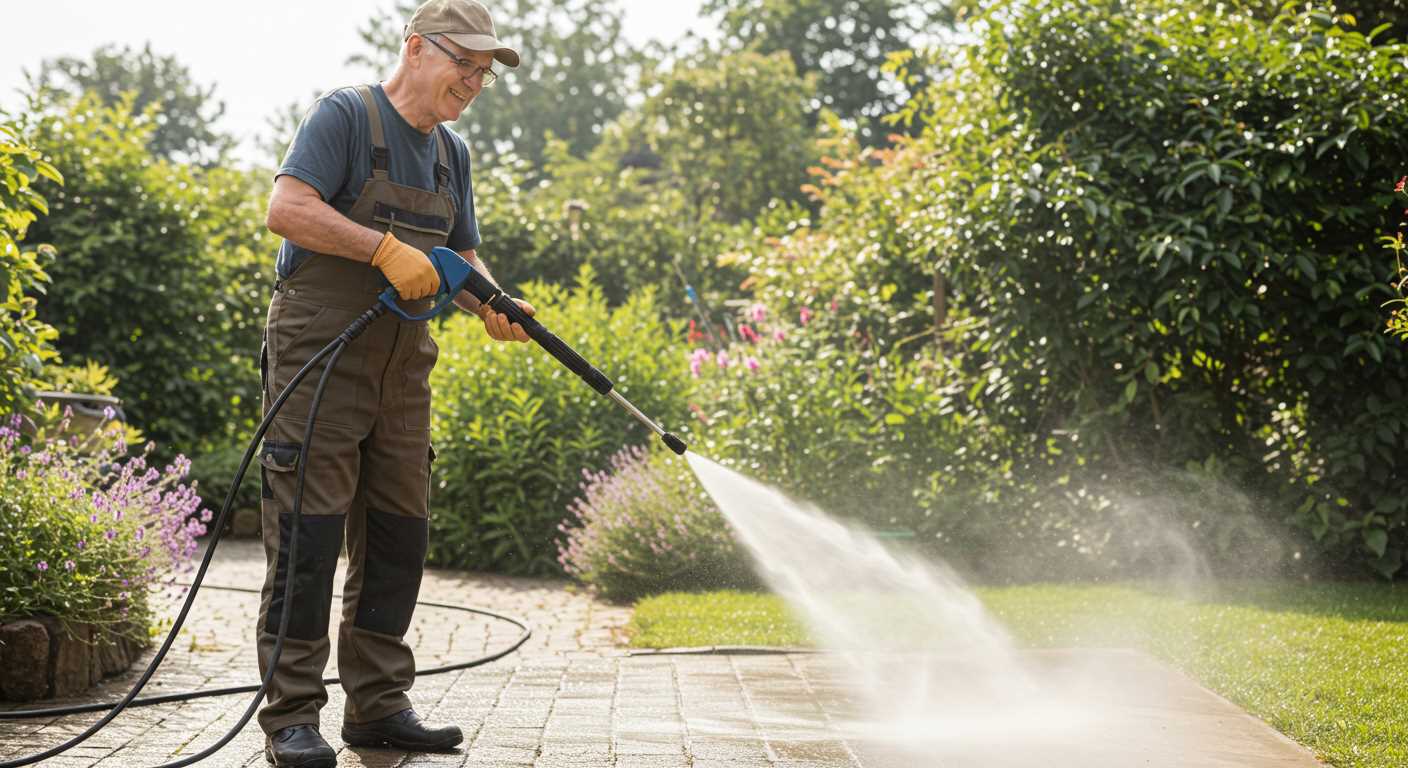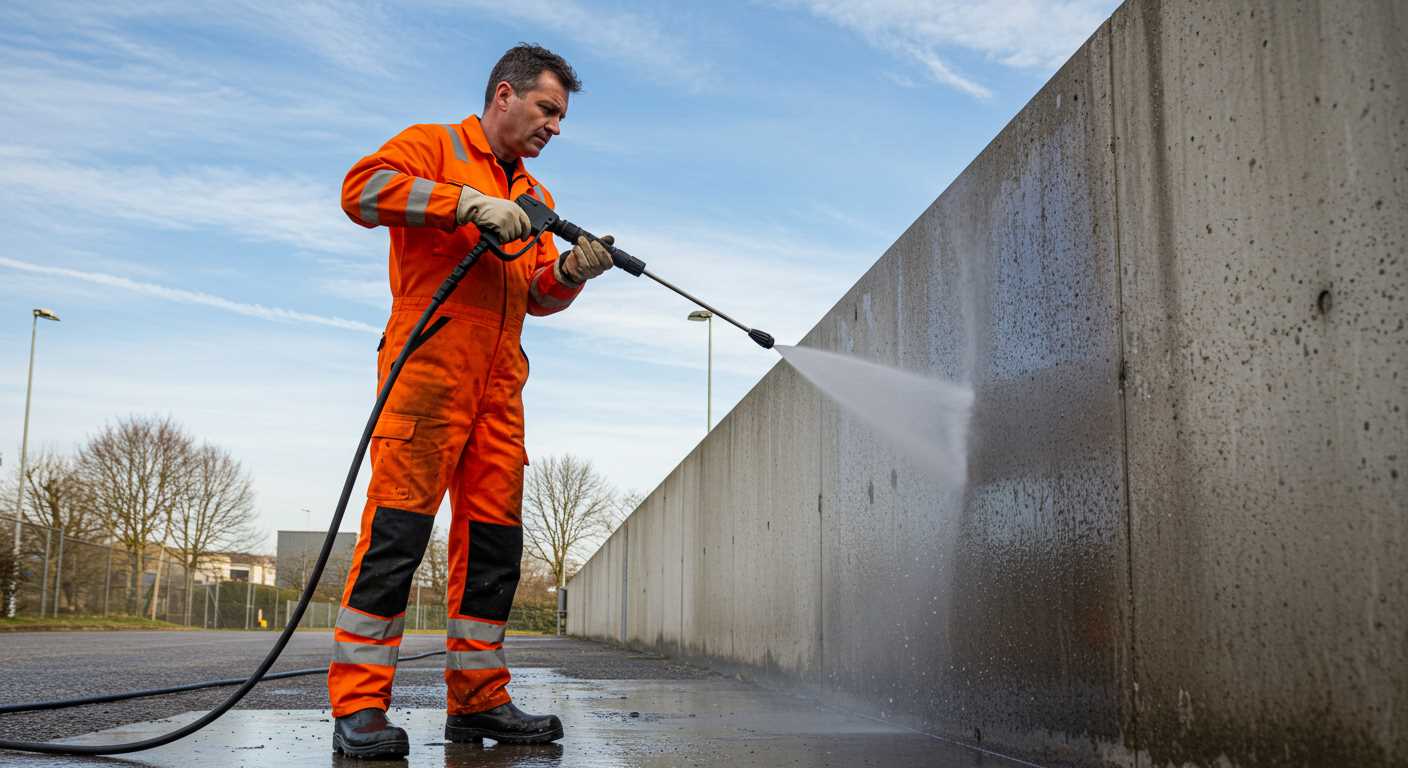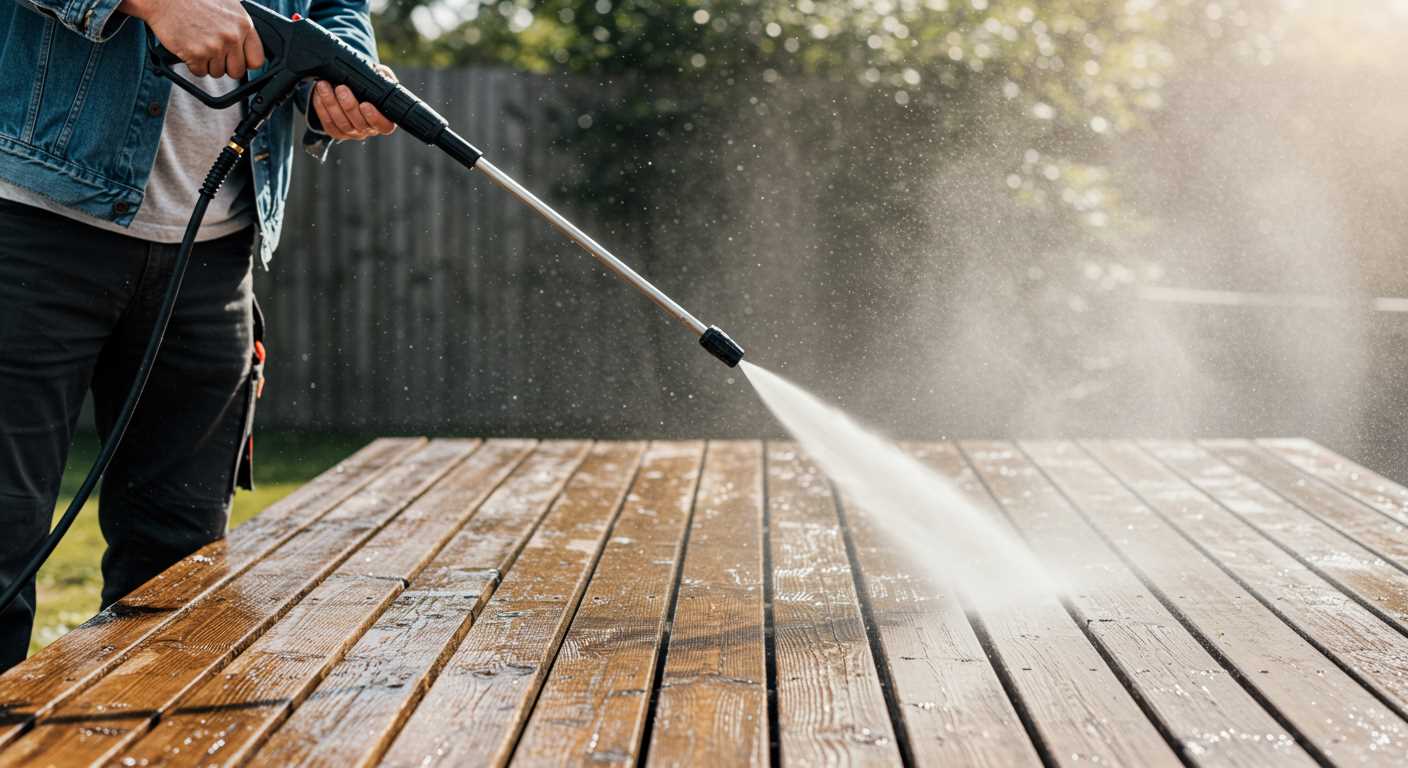



Prioritise the specifications that matter most for your intended use. Look for a unit with a minimum of 2,000 PSI (pounds per square inch) if you plan to tackle stubborn grime, such as that on decks, driveways or vehicles. A flow rate above 1.5 GPM (gallons per minute) is also advantageous, as it ensures that you get the job done more quickly.
Consider the type of motor; electric motors are typically quieter and more suitable for residential tasks, while gas engines offer greater power for commercial activities. Review the nozzle options available; adjustable nozzles provide versatility for various tasks, allowing you to switch between a focused spray for tough jobs and a wider spray for rinsing surfaces.
Evaluate the build quality of the machine. Look for durable materials that can withstand wear and tear, particularly if you intend to use the equipment regularly. Pay attention to the length of the hose and cord; longer hoses and cords can significantly enhance the manoeuvrability and reach of the appliance, saving you the hassle of frequent repositioning.
Finally, don’t overlook the importance of customer service and warranty. A robust warranty and accessible support can make a significant difference should any issues arise post-purchase. Investing time in these factors will lead to a fulfilling and lasting experience with your chosen cleaning device.
Understanding Different Types of Pressure Cleaners
For optimal performance, selecting the right equipment entails recognising the distinctions between various models available. There are three primary classifications: electric, petrol, and hot water units.
Electric Models

These variants are perfect for residential use, as they offer convenience and are lightweight. Typically, they operate at pressures between 1300 and 2000 PSI, making them suitable for tasks such as cleaning patios, garden furniture, and vehicles. They are quieter than their petrol counterparts, and maintenance is minimal. However, extension cords may limit mobility.
Petrol Units
For more demanding applications, these machines may be preferable. Operating at higher pressures (often exceeding 3000 PSI), they excel at tackling heavy-duty chores like stripping paint or cleaning large driveways. Built for portability, they do require more maintenance and can be noisier. Fuel availability and emissions are key considerations with these models.
Hot water systems generally outperform cold water in terms of removing tough grease and grime, making them ideal for industrial settings or situations where heavy contaminants are present. However, they come with a higher cost and added complexity in maintenance.
An informed assessment of your cleaning needs and frequency of use will direct your investment wisely. Selecting from these types based on specific tasks will enhance efficiency and satisfaction.
Key Features to Consider When Selecting a Pressure Washer
Begin with motor power; generally, electric units range from 1200 to 1800 watts, suitable for light to medium applications. For heavy-duty work, gas-powered models often exceed 3000 PSI, delivering superior performance.
Pressure Ratings

Pay attention to PSI (pounds per square inch) ratings. The higher the PSI, the more powerful the stream. Common ranges include:
- 1000-2000 PSI: Ideal for home use, such as cleaning patios and vehicles.
- 2000-3000 PSI: Suitable for stubborn stains and larger areas.
- Over 3000 PSI: Designed for commercial or industrial tasks.
Water Flow Rate
GPM (gallons per minute) indicates the flow rate. Higher GPM ensures quicker cleaning. Consider these ranges:
- 1.2-1.5 GPM: Sufficient for light-duty tasks.
- 1.5-2.5 GPM: Balances power and efficiency for typical home projects.
- 2.5+ GPM: Necessary for heavy-duty applications, reducing cleaning time significantly.
Accessibility of accessories can streamline your tasks. Ensure the unit is compatible with a variety of nozzles and attachments, such as surface cleaners and foam cannons, enhancing versatility.
Consider mobility. Models with larger wheels and a sturdy frame are easier to manoeuvre on uneven terrain.
Finally, evaluate durability. Look for corrosion-resistant materials like brass or stainless steel fittings, ensuring longevity under tough conditions.
Identifying Your Cleaning Needs and Applications
Begin by analysing the specific tasks awaiting cleaning attention. For heavy-duty projects like removing paint or grease from concrete, consider units with a high PSI (pounds per square inch) rating–above 3000 PSI is typically suitable. In contrast, light household chores, such as cleaning garden furniture or vehicles, often require machines with PSIs between 1300 and 1900.
Evaluate the surface materials you’ll be cleaning. Delicate surfaces, including wood decks or painted surfaces, require lower pressure levels to prevent damage. A model with adjustable pressure settings is advantageous in such cases. Conversely, for robust surfaces like brick or asphalt, select equipment with higher pressures to tackle tough stains effectively.
Assess the frequency of use as well. For occasional tasks, electric models might suffice, offering convenience without the need for fuel. However, for regular and intensive applications, gas-powered options deliver superior power and autonomy, suitable for more extensive jobs.
Consider attachments and accessories based on your cleaning goals. A variety of nozzles allows for versatility–narrow nozzles produce a concentrated jet for stubborn stains, while wider ones are beneficial for rinsing larger areas quickly. Additionally, foam cannons can enhance cleaning solutions for car maintenance.
Prioritise storage and portability. If space is limited, opt for compact designs with integrated storage for hoses and nozzles. If moving between locations is frequent during cleaning tasks, lightweight models with transport wheels can provide convenience.
Lastly, recognising your long-term investment plans matters. While entry-level machines may appear cost-effective, consider durability and warranty options. Quality units often come with better support, ensuring longevity and reliability for ongoing projects.
Comparing Electric vs. Gas Pressure Washers
For residential use and small to medium projects, electric models often stand out due to their portability and ease of use. They require minimal setup–just plug them in, turn them on, and you’re ready to go. Their quieter operation makes them a favourite in urban areas where noise restrictions may be in place. With pressure ratings typically ranging from 1300 to 2000 PSI, they’re suitable for tasks like cleaning patios, bicycles, and outdoor furniture.
On the other side, gas machines deliver higher performance, making them ideal for heavy-duty applications. With power ratings soaring from 2000 to 4000 PSI, these units excel in tackling challenging jobs, such as removing deep-set dirt from large driveways or preparing surfaces for painting. Their self-sufficient nature means you can work in remote areas without the need for electricity, providing unmatched flexibility.
Operational Costs and Maintenance
Electric models usually have lower operational costs since they just require electricity and minimal maintenance. They’re less prone to issues and often feature longer warranty periods. In contrast, gas variants involve fuel costs, oil changes, and more frequent maintenance checks, which can impact your overall expenditure over time.
Weight and Mobility

Electric units are lighter, making them easier to manoeuvre and store. This aspect is particularly advantageous if you frequently transport the equipment or have limited storage space. Gas machines, while heavier due to their powerful engines, are often fitted with larger wheels, aiding in mobility over rough terrain.
Assessing Pressure Ratings and Flow Rates
Start with the pressure rating, measured in PSI (pounds per square inch). For light tasks like washing cars, a rating of 1300 to 1900 PSI is adequate. Medium-duty tasks such as cleaning patios or decks require around 2000 to 2800 PSI. Heavy-duty applications, including removing paint or stubborn grime, will need 2900 PSI or above.
Flow rate, indicated in GPM (gallons per minute), influences how efficiently the machine operates. A higher GPM means better cleaning power at lower pressure. For example, 2.0 GPM at 2000 PSI can clean more effectively than 2.5 GPM at 1500 PSI. A minimum of 1.5 to 2.0 GPM is recommended for general use.
| Application | Recommended PSI | Recommended GPM |
|---|---|---|
| Car Wash | 1300 – 1900 | 1.5 – 2.0 |
| Patios/Decks | 2000 – 2800 | 2.0 – 2.5 |
| Heavy Cleaning | 2900+ | 2.5+ |
When assessing equipment, consider a balance between PSI and GPM. High-pressure machines with low flow rates can result in less effective cleaning due to inadequate water coverage. Conversely, high GPM with low PSI might not tackle tougher stains. Aim for a balance that suits your specific cleaning tasks.
Evaluating Portability and Storage Solutions

When assessing cleaning machines, focus on weight and mobility features. A lightweight design allows for effortless transport, especially when tackling larger areas. Models equipped with wheels enhance manoeuvrability, facilitating movement across various terrains. Opt for units that feature ergonomic handles, which make lifting and transporting more manageable.
Storage solutions also play a crucial role. Look for machines that incorporate onboard storage for hoses, cords, and nozzles to prevent tangling and damage. Some models include collapsible handles, minimising the footprint when not in use. Consider those with integrated storage compartments, which keep accessories organised and conveniently accessible.
Battery-operated versions offer significant flexibility, eliminating concerns about power outlets. Ensure the battery life meets your needs, allowing for prolonged use without interruption. Always check for models that allow for easy recharging and replacement of batteries.
Lastly, consider your space constraints. If storage is limited, compact designs that can fit in small spaces are essential. A vertical storage option can be particularly advantageous for tight areas. Always envisage the entire workflow, from transport to storage, making informed decisions to ensure your tool complements your environment seamlessly.
Reading Customer Reviews and Ratings for Informed Choices
Focus on feedback from actual users rather than just manufacturer claims. Dive into various platforms such as Amazon, Home Depot, and dedicated cleaning technology forums to gather a diverse range of opinions. Look for detailed accounts that mention specific aspects like durability, performance in real-life scenarios, and ease of use. Pay attention to reviews that provide insights on troubleshooting common issues and the longevity of the units.
Analyzing Ratings
Consider the overall star rating but don’t stop there. Examine the distribution of ratings. A model with predominantly five-star reviews mingled with several one-star comments may indicate inconsistencies. Reviewers often share practical insights about the cleaning power and efficiency under different conditions, so take notes on any shared experiences regarding reliability and maintenance needs.
Identifying Key Themes
Look for recurring themes in the reviews. If multiple users mention that a particular brand excels at cleaning patios but struggles with vehicles, this may help refine your options based on personal cleaning requirements. Also, check if there are mentions of parts replacement and warranty service experiences, which can give valuable hints towards long-term satisfaction.






